.jpg)
TRX Tactical: The Ultimate Outdoor Workout Companion
As you probably already know, TRX is a revolutionary fitness training tool that has taken the fitnes...
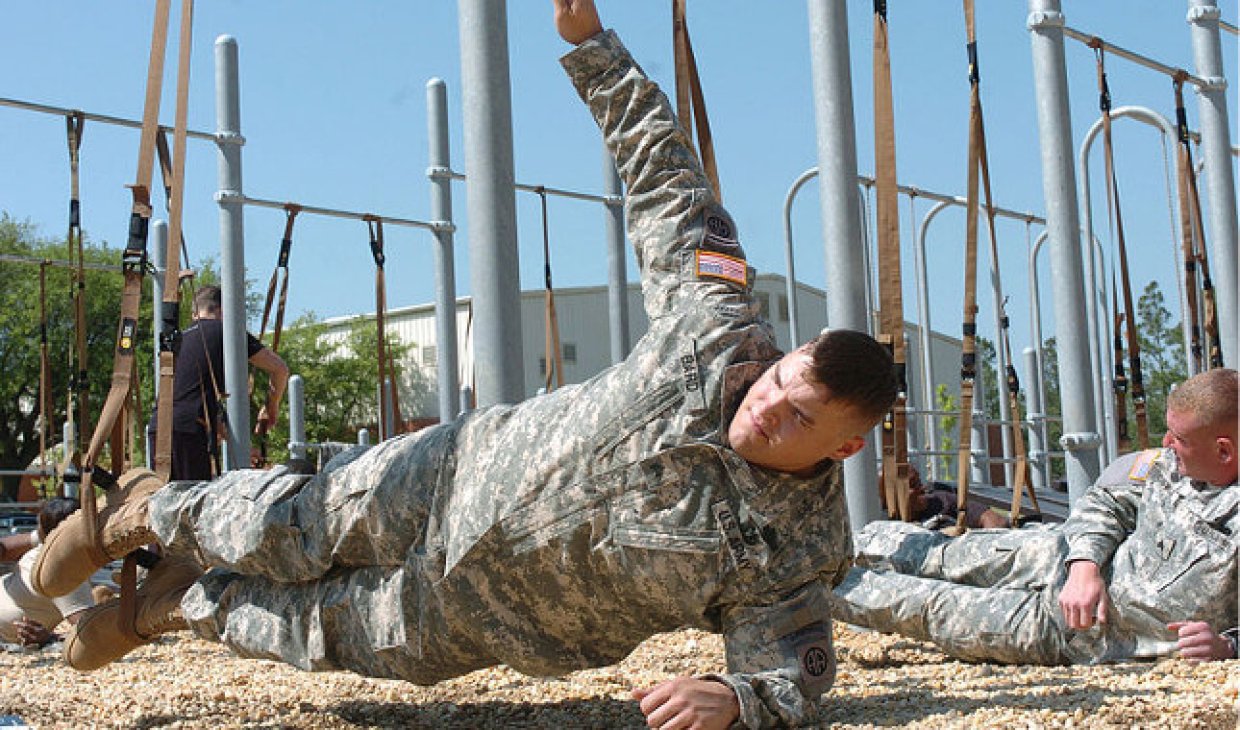
The US has a diverse military force, but also an elite Navy that must be able to conduct warfare in all conditions, with a particular focus on training on the water. TRX founder Randy Hetrick, a former US Navy Seal, says the Navy trains like professional athletes to be ready for any mission. However, civilians can also perform many of the same exercises the Navy performs - all they need is a TRX suspension system.
The Navy has high-end fitness facilities with quality equipment, but away from their headquarters, soldiers have to do simpler exercises such as push-ups, squats and bodyweight exercises, or as Hetrick describes it, "traditional exercises that have been done since Roman times".

"If you're in a military operation for several weeks, nobody takes a treadmill with them," Hetrick explains. "All you can do in that situation is do lunges, planks, the famous Jumping Jacks and do lots of push-ups. These are exercises that can be done by anyone, anywhere, the problem is that Navy soldiers need higher intensity.
"In special operations, you need to carry a lot of extra weight and props. Each of the soldiers does different tasks, so you have to carry heavy bags, lots of weapons and armor," says Hetrick. "Soldiers need to be as sturdy and comfortable as possible carrying so many extra props. And they have to do it every single day, every single night."
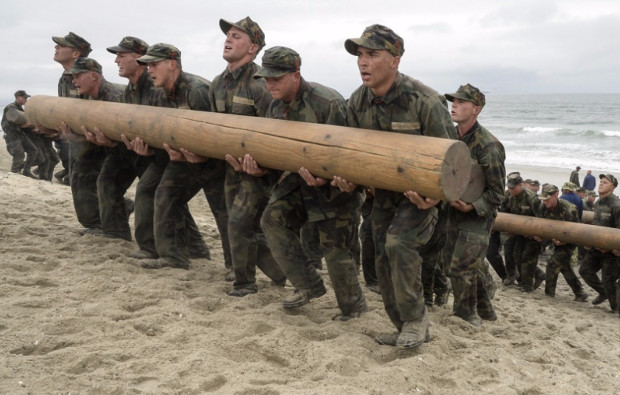
Hetrick had been thinking about the idea of a TRX suspension system since he joined the US Navy and realised that a suspension system would allow him to perform hundreds of exercises and be able to adjust the load using just his body weight and a couple of straps.
For Hetrick and his team, training in functional modalities was critical. "You're trying to protect your body when you build it, so you work on shoulder strength and lower-body endurance all the way through," he says.
The US Navy focuses on the hips, knees and ankles in training and these ten exercises target these areas.
One of the best movements for the Navy is the TRX lunge. "TRX lunges are one of the best exercises because it engages all the stabilisers. It has to be done with one leg, so no extra load is needed to make it a challenging exercise," says Hetrick.
TRX lunges
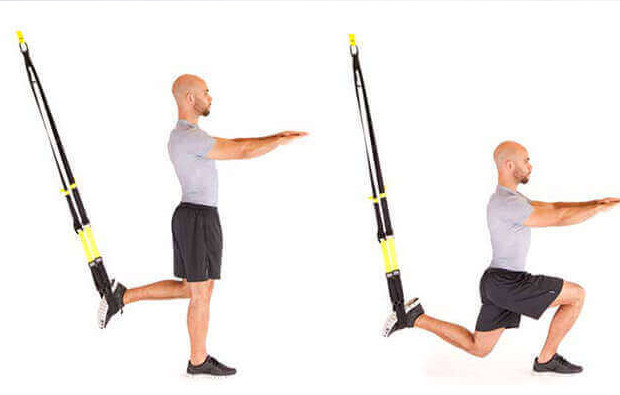
Hetrick recommends supplementing TRX lunges with TRX single leg squats and TRX Sprinter Starts for a complete lower body workout. According to Hetrick, such isolation exercises are important to prevent and recover from injury.
TRX single leg squats
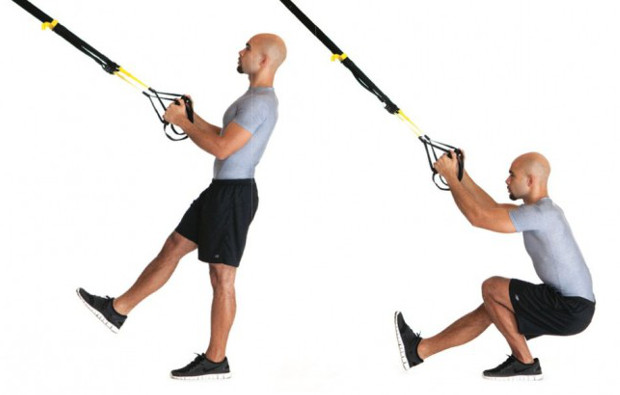
TRX Sprinter Starts
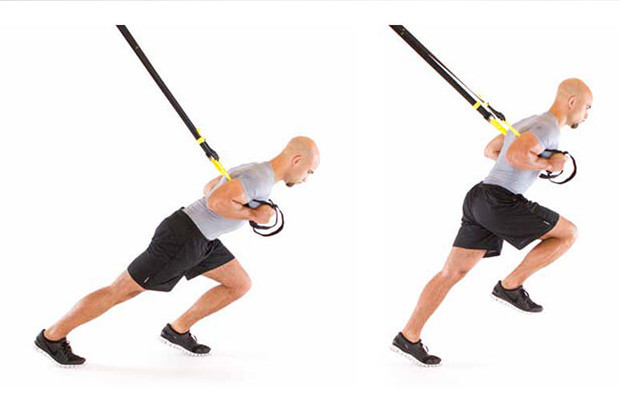
The next step is the upper body. No US Navy workout is complete without a TRX Power Pull exercise: the first exercise Hetrick came up with when prototyping the TRX suspension system.
TRX Power Pull
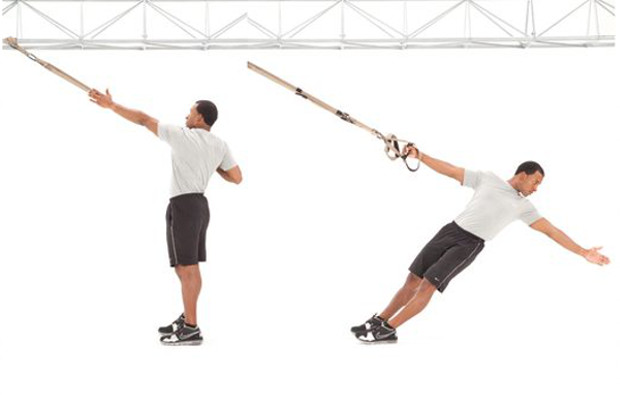
Hetrick invented the move by mimicking the movements soldiers use in their daily lives, such as crawling up the ladders of a helicopter. The exercise works each side separately, engaging the abdominal muscles.
Along with this exercise, Hetrick also recommends the T Deltoid Fly, the TRX Suspension push-up and the TRX Suspension side-arm push-up, combining strength and stability exercises.
TRX push-ups
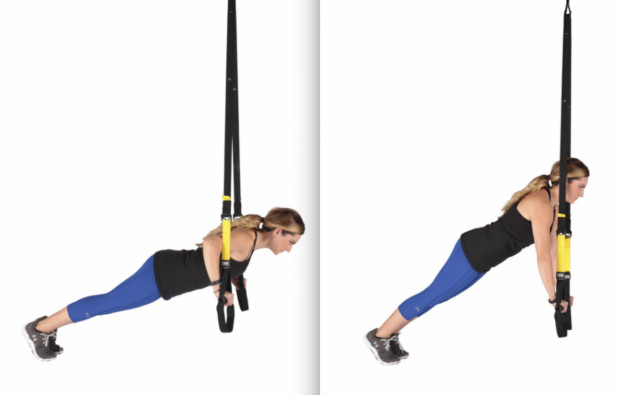
T Deltoid Fly
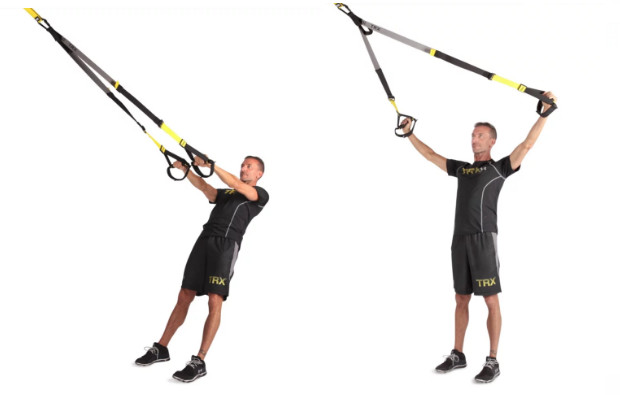
TRX Suspension side-arm push-up
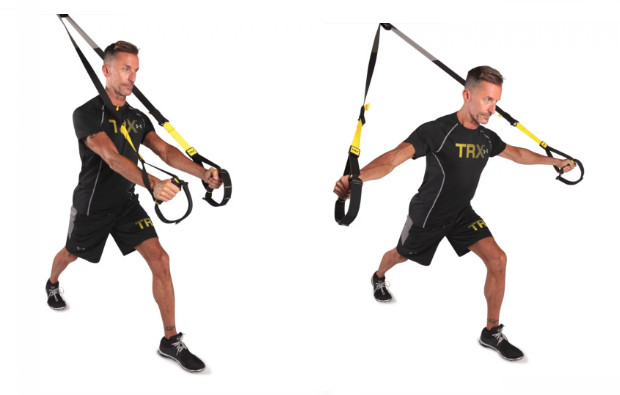
The last exercises for Navy soldiers with the TRX suspension system are the planks, or forearm rests, and their variations. Those who have tried the TRX Hamstring Curl or Hip Press understand that these exercises are not the easiest and are challenging. Although both of these exercises can be performed with your own weight, they are among the most effective for engaging the hamstrings and hip muscles.
TRX Hamstring Curl
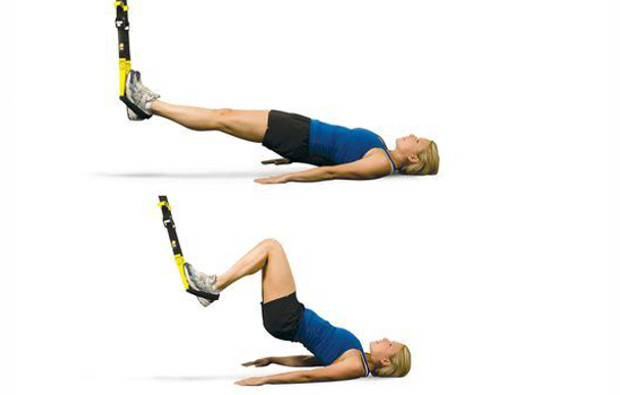
Hip Press
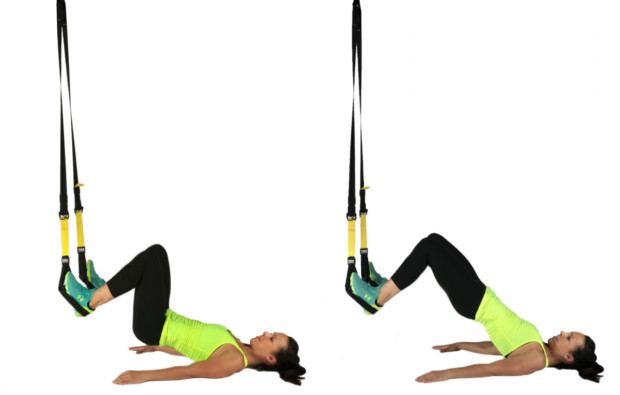
But when it comes to the US Navy's favourite exercise, Hetrick says it's the TRX Atomic Push-Up.
TRX Atomic Push-Up
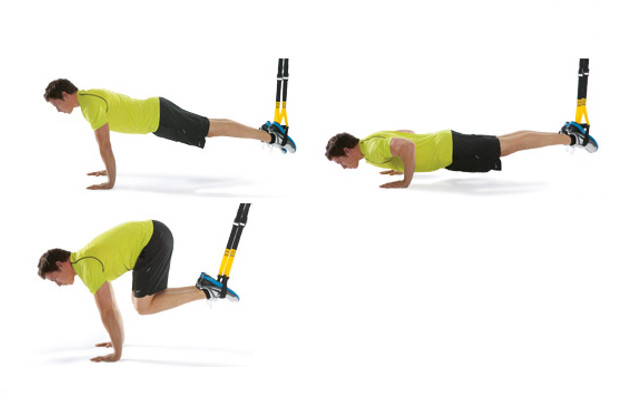
The notion that all exercises in Navy training are performed with maximum repetitions is a myth. Health-safe training is the top priority for soldiers, because an injured soldier will not be able to fight an enemy.
Are you ready for an advanced Navy training at home? Challenge yourself. Perform each exercise with 20 reps. (Don't forget to take small breaks while you adjust the length of the TRX bands for each exercise). Once you have gone through all ten exercises, repeat one more time!